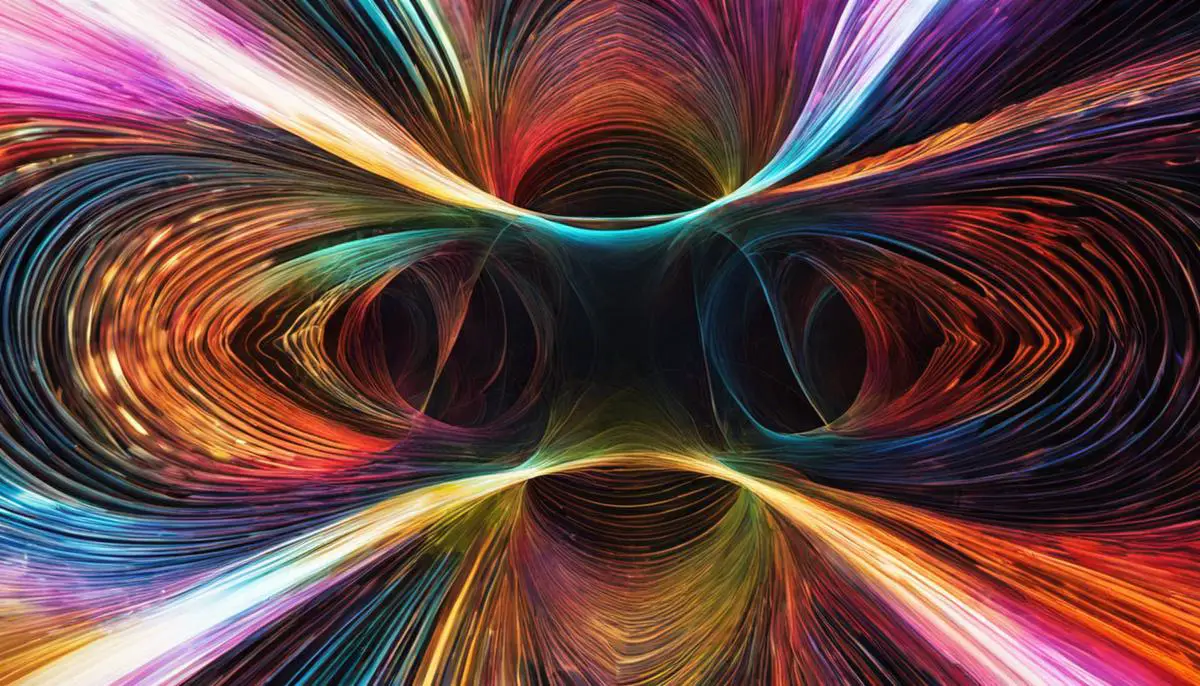In the vast, infinite universe, space and time intermingle in an intricate dance that shapes our perception of reality in more ways than we often realize. Delving into the heart of this profound concept, we take you on a journey through the space-time continuum, exploring what it is, its immense implications, and how it is embedded in the fabric of our everyday lives. Brace yourself to dive into the intriguing world of physics and astronomy, exploring the brainchild of Einstein—the theory of relativity that catapulted our understanding into a fundamentally new concept—that of space-time. Punctuated with the fascinating wonders of gravitational waves and black holes and concluding with the portrayal of space-time in popular culture, this exploration attempts to break down a complex concept into digestible, everyday knowledge.
The Concept of Space-Time
Space-Time Continuum and Albert Einstein’s Contributions
The notion of space-time continuum is inextricably tied to Albert Einstein’s theory of relativity, specifically his Special Theory of Relativity formulated in 1905 and the General Theory of Relativity released in 1915. The concept interlaces three dimensions of space and one of time into a four-dimensional continuum. This innovative approach to understanding the universe changed the way we perceive space and time, revolutionizing theoretical physics and cosmology.
The Space-Time Conception
Integrated in Einstein’s general theory of relativity, one of the profound revelations about the space-time continuum is its curvature in the presence of mass and energy. In essence, the more mass or energy an object has, the more it warps the space-time around it. Objects move along the ‘paths’ created by this curvature. This explains the gravitational attraction between bodies in the universe: it is but a result of objects following curved paths in space-time, rather than being drawn to each other through some mysterious force at a distance as envisioned by Newton.
Noteworthy Scientists and Experiments
Numerous scientists besides Einstein made significant contributions to our understanding of space-time. Renowned mathematician Hermann Minkowski, a one-time teacher of Einstein, presented a geometric interpretation of space-time in 1908. He argued that the events of the universe occur within a four-dimensional space-time, not within three-dimensional space independently of time. This became the groundwork for Einstein’s later development of general relativity.
In 1971, the Hafele-Keating experiment provided one of the first observable confirmations of the effects predicted by the theory of relativity. The experiment involved atomic clocks flown around the earth, which deviated from the time kept by synchronized stationary atomic clocks. The results confirmed the predicted effects of time dilation and gravitational time dilation, which state that time slows down for objects moving at high speeds relative to a stationary observer or closer to a massive object. This experiment cemented the concept of space-time in physics and cosmology.
Introducing Space-Time: A Critical Component of Contemporary Physics and Cosmology
In the realm of contemporary physics, the principle of the space-time continuum, based heavily on Einstein’s theory of relativity, is seen as fundamental. It’s integral to understanding various facets of a broad range of domains that include cosmology, astrophysics, and quantum mechanics. To illustrate, an in-depth comprehension of the workings of black holes – spatial regions known for their exceedingly strong gravitational pull that prevents anything from escaping – necessitates a firm grounding in the concept of the space-time continuum.
The continuum of space-time isn’t just significant in the traditional areas of physics; it also plays a crucial role in the sphere of quantum science, notably in the development of string theory. This intriguing theory asserts that the most basic elements of reality are actually energy strings oscillating at various frequencies, existing within defined dimensions of space-time.
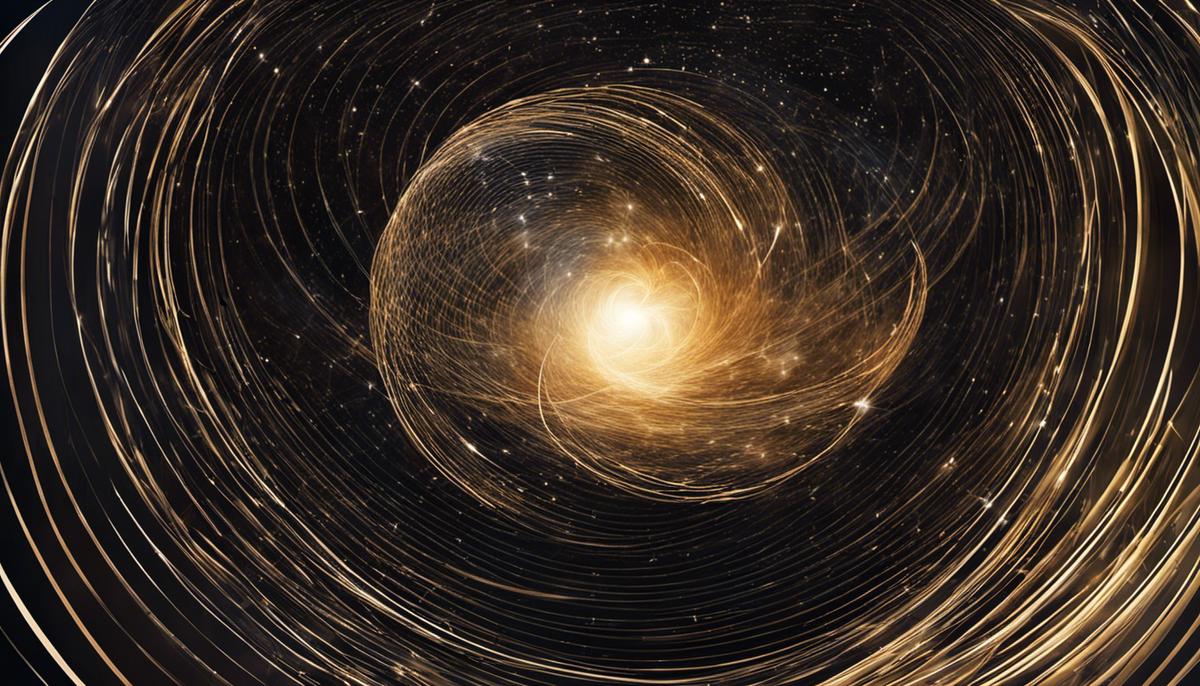
Gravitational Waves and Black Holes
Delving Deeper into the Space-Time Continuum
The science of the space-time continuum is based on a four-dimensional model that unites the three familiar dimensions of space – length, width, and height – and time, resulting in a single entity. However, this single entity is not a flat plane; it is shaped by the mass and energy within it causing a curvation. This curvature shapes the trajectories of objects navigating through it, giving rise to what we perceive as gravity.
Gravitational Waves: Ripples in Space-Time
Gravitational waves are disturbances or ripples in space-time caused by some of the universe’s most violent and energetic processes. According to Einstein’s theory of general relativity, any acceleration of a large mass will distort the space-time around it and cause waves, much like dropping a stone in a pond. When these waves pass us, they cause the distance between objects in space to expand and contract, at a scale much smaller than an atomic nucleus. Detecting these tiny changes is a major scientific achievement.
Gravitational Waves and Black Holes
The discovery of gravitational waves has opened a new window on black holes. When two black holes collide, they merge into a larger one and release a colossal amount of energy. According to Einstein’s theory, this energy propagates outward as gravitational waves, causing ripples in space-time.
On September 14, 2015, for the first time ever, scientists detected these ripples from two merging black holes more than a billion light years away, thus giving a key validation to Einstein’s theory of general relativity.
Space-Time Distortion in Black Holes
A black hole is a region of space-time exhibiting gravitational acceleration so strong that nothing—no particles or even electromagnetic radiation such as light—can escape from it. The theory of general relativity predicts that a sufficiently compact mass can deform space-time to form a black hole.
The singularity at the center of a black hole is where our current understanding of physics breaks down. Here, according to theory, mass is crushed to infinite density, space-time is infinitely curved, and time itself ceases to exist. Surrounding the singularity is the event horizon, a boundary beyond which nothing can escape the gravitational pull of the black hole.
Exploring the Space-Time Continuum
The enigmatic workings of the universe can be better understood through the lens of the space-time continuum. Whether it’s the ripple patterns created by gravitational waves as they traverse space-time, or the intense distortions witnessed within black holes, the space-time continuum is central to our comprehension of these phenomena. These mysterious cosmic events illustrate a captivating interplay between space and time, highlighting the potent influence of gravity on the fabric of the cosmos.
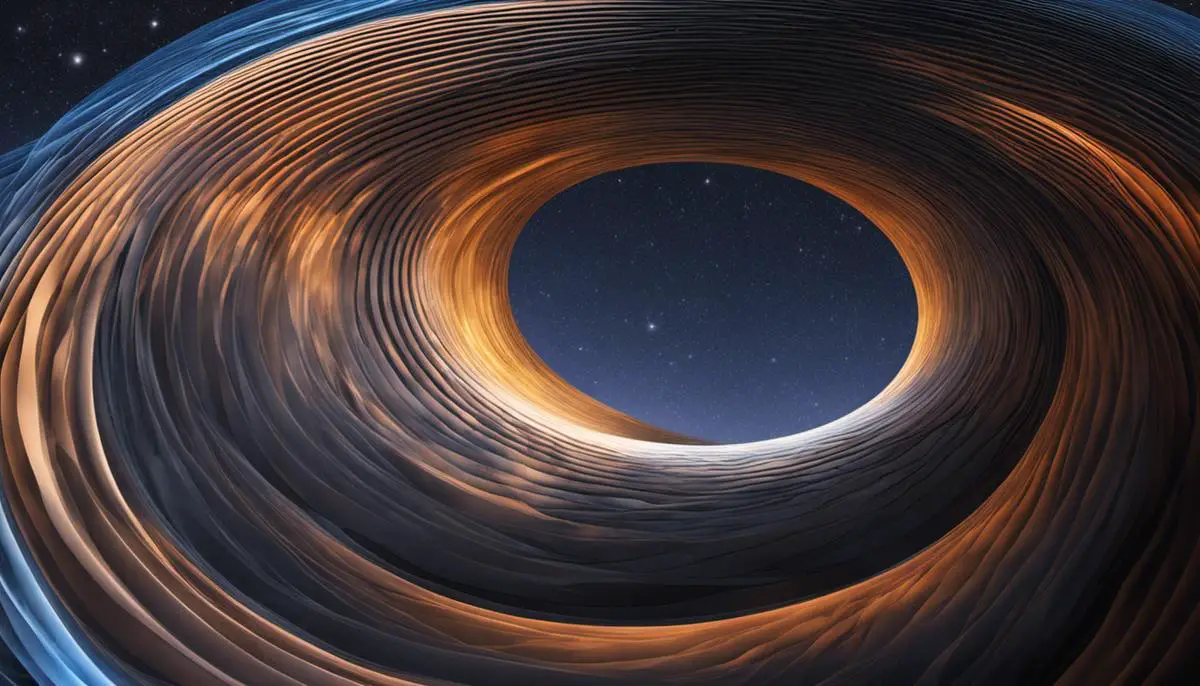
Impacts and Consequences of Space-Time
Getting to Grasp the Space-Time Continuum
The notion of the space-time continuum has its roots in Albert Einstein’s Theory of Relativity. Simply put, it envisions a four-dimensional framework which fuses our conventional understanding of three-dimensional space with the added element of time, forming a single entity aptly referred to as space-time. This unique four-dimensional grid is where we perceive all the events, activities and phenomena that make up the universe as we know it.
Space-Time and Planetary Orbits
One practical impact of the space-time continuum is its influence on the orbiting of planets. Before the concept of space-time, Newton’s theory of gravity explained that bodies like planets were attracted to the Sun’s massive mass. This consequently resulted in their elliptical orbits. However, Einstein’s theory of General Relativity added another layer to this explanation. It proposed that large objects like the Sun cause the space-time around them to curve, creating a ‘well’ in which smaller objects like planets travel. Thus, planets are not just pulled towards the Sun, they are also moving along the curved paths of this space-time well.
Space-Time and Air Travel
The influence of the space-time continuum is also evident in air travel, more specifically in the flight paths of planes. Similar to the movement of planets, an airplane’s flight path is influenced by the curvature of space-time. The crew and passengers aboard an airplane are, in essence, experiencing a slightly different rate of time compared to individuals on the ground due to gravitational time dilation, a phenomenon where time runs slower the closer one is to a massive object.
Newtonian Physics Vs Special Relativity
Prior to Einstein’s theory, Newtonian physics was the foundation of our understanding of the universe. In Newtonian mechanics, time and space are absolute and separate entities. However, the theory of special relativity paints a different picture. It assumes that the laws of physics should look the same to all observers, regardless of their motion relative to each other. Furthermore, special relativity introduces the idea that time can ‘dilate’, or run slower, given enough speed, a phenomena known as time dilation.
Space-Time and Reality
The space-time continuum doesn’t just pertain to planets and airplanes. Its implications can be seen in everyday life as well. For instance, GPS satellites need to account for both special and general relativity in their operation. The slight differences in time due to these effects are instrumental in achieving the precise location data that these systems provide. Thus, the space-time continuum is not just a theoretical concept, but a physical reality that structures the very world we live in.
The Influence Of Space-Time On The Future Of Space Exploration
The space-time continuum concept, particularly its potential for establishing more efficient means of journeying across indomitable interstellar distances, lies at the heart of the progression of space exploration. This understanding could lead to the development of radical propulsion methods such as wormholes – shortcuts within the fabric of the space-time continuum. Additionally, black holes, the ultimate pinpoints of infinite space-time curvature, stand as compelling mysteries that might revolutionize our comprehension of the cosmos when unraveled.
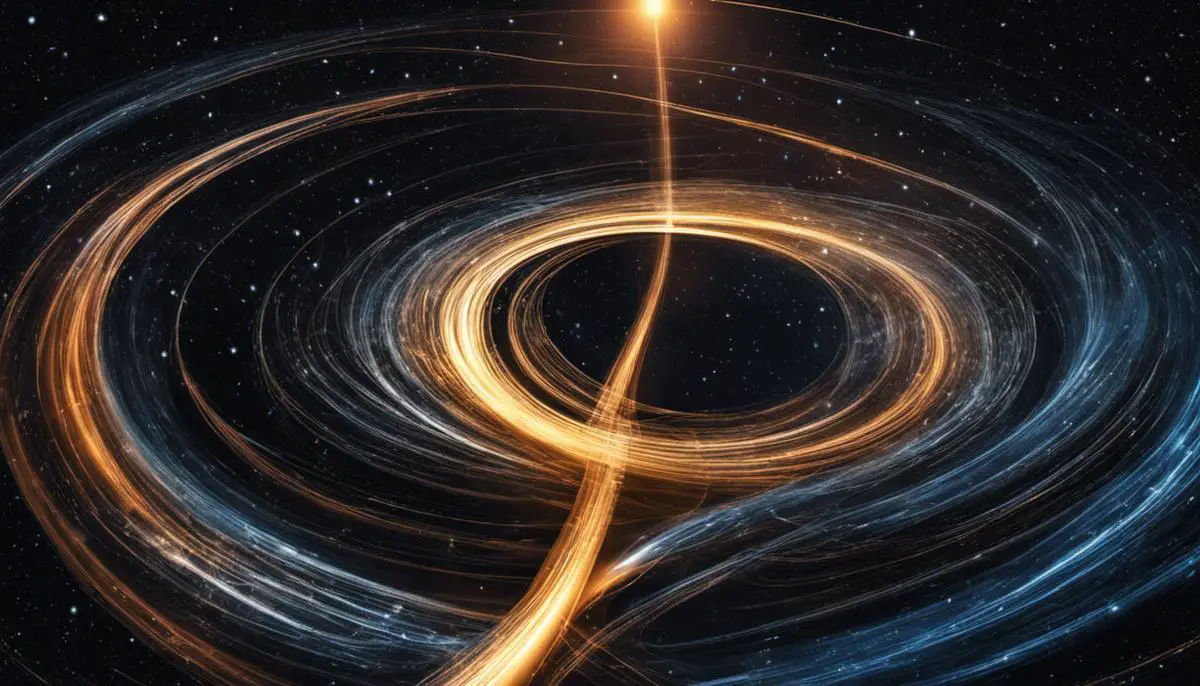
Space-Time In Popular Culture
Unraveling The Space-Time Continuum: A Sci-Fi’s Favorite Device
The magnificence of the space-time continuum has not only magnetized scientific minds but has also branched out into the realm of popular culture, predominantly in the genre of the science fiction (Sci-Fi) cinema. The fascination towards the concept of time travel, made plausible by the principles of the space-time continuum, brings a note of scientific credibility to these riveting narratives. The iconic “Back to the Future” trilogy stands as a testament where manipulation of the space-time continuum enables time travel.
Sci-Fi films like “Interstellar,” ferry spectators through the riveting journey of a team of explorers traversing a wormhole prognosticated to exist near Saturn, giving audiences a tantalizing glimpse of the complex phenomenon of time dilation. Films like “Donnie Darko” offer a more philosophical perspective. They delve into metaphorical analysis of time travel, employing a concept similar to the space-time continuum itself — a tangent universe.
Literature and Space-Time Continuum
Science fiction literature has also played a significant role in shaping our understanding of the space-time continuum. H.G. Wells’ novel, “The Time Machine,” was one of the first to bring these concepts to the forefront. In it, the protagonist uses a machine to travel through time, suggesting a physical and tangible connection between time and space.
Books like “A Wrinkle in Time” by Madeleine L’Engle propose the existence of tesseracts, a hypothetical means of traversing the space-time continuum quickly. Philip K. Dick’s stories often wrestle with the nature of reality, time, and space, leading to complex and often unsettling portrayals of the space-time continuum.
The Multiverse Theory in Pop Culture
Additionally, the multiverse theory is a popular trope in both movies and literature. This theory implies a multitude of universes, including the one we inhabit. Each of these separate universes comprises its unique space-time continuum and distinct laws of physics.
These parallel universes come to life in the “Marvel Cinematic Universe,” where each Universe and dimension has its own space-time fabric. At specific points in the series, the multiverse theory is substantially examined, most notably in “Doctor Strange” and “Avengers: Endgame”.
Wormholes and Other Misunderstood Concepts
Wormholes, another misunderstood concept, provide shortcuts across the universe by warping the space-time continuum. They are frequently used in stories to allow rapid interstellar or time-travel, such as in the movie “Contact” based on Carl Sagan’s novel.
These portrayals, however, often simplify or gloss over the extraordinarily strange character of these phenomena as predicted by general relativity and quantum physics. In reality, wormholes and other exotic space-time structures are highly speculative and not yet backed by any observational evidence.
Space-time, a perplexing subject deeply rooted in the field of theoretical physics, has somewhat been demystified to the layman through its representation in popular culture regardless of the precision of these portrayals.

Current Research and Future Possibilities
Unraveling the Mysteries of Space-Time
In line with general relativity principles, space-time is envisioned as a four-dimensional continuum blending the three space dimensions and one time dimension. With the pace of advancements in technology and theoretical research, our comprehension of this enigma continues to evolve.
Theoretical physicists have been largely engrossed in the pursuit of a quantum gravity theory which might reconcile the inherent differences between quantum mechanics and general relativity. String theory, which imagines point-like particles as one-dimensional strings, stands as a hopeful candidate in depicting gravity’s quantum characteristics.
Lately, the unexpected association between gravity, quantum information, and thermodynamics has been the epicenter of much deliberation. This line of inquiry has unveiled the ‘holographic principle’, a staggering theory suggesting that all information in our three-dimensional universe could potentially be coded on a two-dimensional plane at the universe’s boundaries.
Exploring Unanswered Questions
One of the biggest unanswered questions in this field is how exactly gravity relates to the other three fundamental forces of physics under extreme conditions—such as the ones existed during the Big Bang or inside black holes. Astronomers and physicists are working together using the Event Horizon Telescope to capture the environment around black holes and hopefully unravel some of these secrets by comparing observations to theoretical predictions.
Another frontier that researchers are exploring is the cosmological scale, and how quantum mechanics, particularly quantum fluctuations, played a critical role in the formation of galaxies and large-scale structures in the universe.
Future Possibilities: Time Travel, Quantum Mechanics, and More
As mind-boggling as it may seem, time travel is a logical consequence of the theory of relativity and its space-time geometry. While physicists are nowhere close to inventing a working time machine, studies on wormholes and warped space-time could potentially allow for time travel, according to some speculative models. However, there still exist considerable conceptual and technical challenges to overcome before time travel can become a realistic possibility.
The future of our understanding of space-time is also closely linked to advances in quantum mechanics. Quantum Hair, for example, is a recent hypothesis suggesting that black holes might not be as bald as once thought, and instead carry a myriad of quantum information encoded in their ‘hair.’ If confirmed, this could bridge the gap between classical physics and quantum physics, revolutionizing our understanding of space-time.
In essence, though our comprehension of space-time has greatly deepened over the past century, there remain many more mysteries about the universe waiting to be explored, making it an exciting field of study for anyone interested in the frontiers of science.
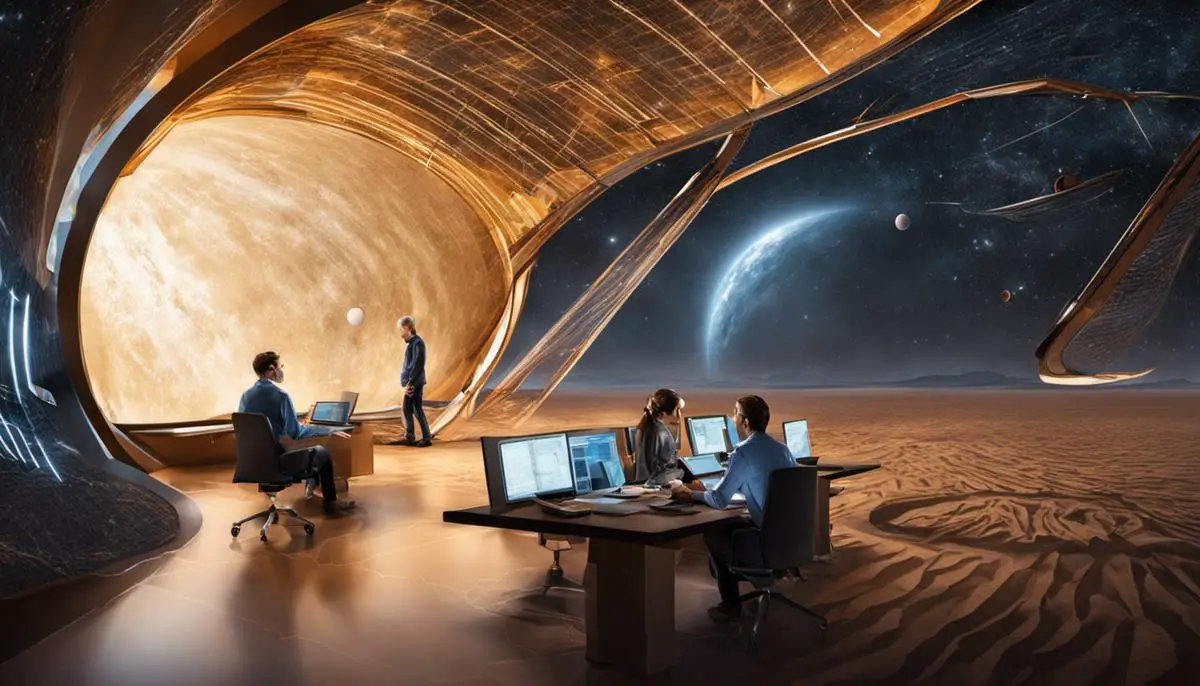
The world of space-time is unendingly fascinating, an expansive, mysterious theatre of cosmic interplay that influences everything we understand about the universe. As we look to the future, our understanding of this profound concept only promises to deepen, potentially unlocking new insights and revolutionizing our connection with the cosmos. From the orbits of planets to the flight path of an airplane, the influences of space-time pervade our reality in incredible ways, a testament to its profound significance. Whether that’s through potential time travel, the probabilities of quantum mechanics, or harmonizing the schism between classical and quantum physics, one thing is clear: the exploration of space-time is an open door to an exhilarating future that beckons us with the promise of understanding and discovery.
FAQ
What is the space-time continuum theory?
A pillar of contemporary physics, the space-time continuum theory unifies the four dimensions of time and the three dimensions of space into a single, cohesive fabric that forms the basis of the universe’s structure. This idea, which was developed inside the parameters of Albert Einstein’s general theory of relativity, holds that time and space are entwined to create a dynamic, interrelated framework. This theory states that enormous objects, such planets or stars, cause distortions in space-time, which affect the trajectories that light and other objects follow through this twisted environment. Gravity is the result of space-time curvature, which is caused by mass and energy. This newfound understanding of the force governing celestial motions is made possible by gravity. The space-time continuum theory has greatly advanced our understanding of the underlying nature of reality by helping to explain a wide range of phenomena, from the bending of light around large objects to the expansion of the universe itself.
What does it mean to break the space-time continuum?
It is common for science fiction to serve as the inspiration for the speculative idea of breaching the space-time continuum rather than accepted scientific theories. The space-time continuum is seen as a fundamental framework that regulates the structure of the cosmos in theoretical physics. In fiction, breaking it would mean upsetting the way that space and time are intertwined, which would open up unorthodox possibilities like time travel or parallel universes. Nevertheless, the idea of disrupting the space-time continuum is largely theoretical and has no empirical basis in the area of present scientific knowledge. The imaginative stories found in science fiction must be distinguished from the thoroughly investigated and proven theories found in physics, such as general relativity, which is the cornerstone of our knowledge of space and time and was developed by Albert Einstein.
What is the space-time continuum philosophy?
Within the philosophical framework, the space-time continuum philosophy explores and interprets the interconnectedness of space and time conceptually. This philosophical approach, which takes its cues from the scientific underpinnings of Einstein’s general relativity, aims to reveal the significant effects of the unified space-time fabric on our perception of reality. It explores issues with existence’s essence, causation, and the individual’s perception of time. When discussing the space-time continuum, philosophers frequently think about how temporal dynamics affect human consciousness, free will, and the metaphysical elements of the cosmos. Though closely related with scientific concepts, the philosophy of the space-time continuum goes beyond empirical findings. It explores the significant consequences of this interconnected cosmic framework on the nature of being by going beyond the realm of metaphysics and existential inquiry.
Can you travel through the space-time continuum?
The capacity to traverse the space-time continuum, particularly in the imaginative meaning frequently depicted in science fiction, continues to be a theoretical and elusive concept. Although time travel is a common motif in literature and film, it has never been confirmed or proven to be possible given the limitations of current scientific understanding. The bending of light around huge celestial bodies is one example of how Einstein’s theory of general relativity states that massive objects have the ability to curve space-time. This phenomenon has been observed to some extent. But in order to actually manipulate space-time for time travel, a number of theoretical and practical obstacles must be overcome, such as the requirement for exotic matter with negative energy density and the avoidance of paradoxes. Though intriguing, the concept of traveling across the space-time continuum is still theoretical and belongs more to the domain of scientific curiosity and creative inquiry than to the domain of accepted scientific practice.
What did Einstein say about the space-time continuum?
By developing the general theory of relativity, Albert Einstein made revolutionary advances to our knowledge of the space-time continuum. In this ground-breaking theory, Einstein suggested that mass and energy cause the fabric of space and time to curve, rather than gravity being only a force between masses as stated by Isaac Newton. The bending of light around huge objects was predicted by Einstein’s calculations and subsequently verified by gravitational lensing studies. He explained how time and space were entwined to create a four-dimensional continuum that is now known as space-time. Our understanding of the cosmos was profoundly altered by Einstein’s work, which established the notion that space and time are dynamic and affected by the presence of matter. His idea offered a fresh viewpoint on the nature of the universe and served as the basis for contemporary cosmology and our comprehension of gravity.
![]()
